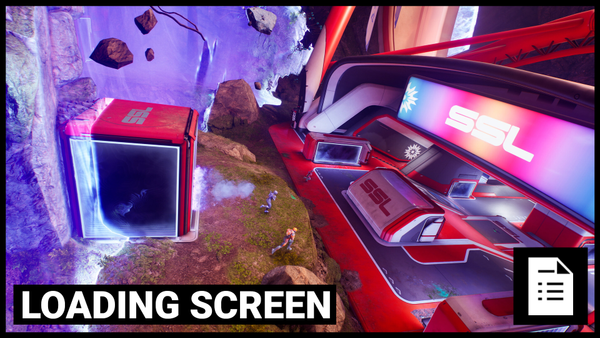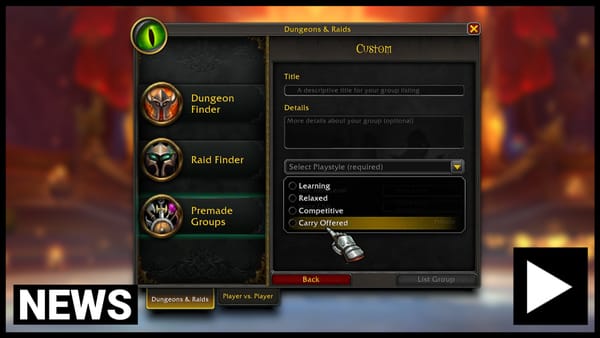Bungie’s Perception Problem
We need to talk about Bungie’s Perception issue with regards to two viral slides that the community thinks sums up Bungie’s Attitude to Destiny 2. Turns out the context is a whole lot more interesting.

Revenue and Over-delivery - Watchwords for Failure
- You’ll probably recognize these two images if you have even a passing familiarity with Destiny 2 or the content creators around it.

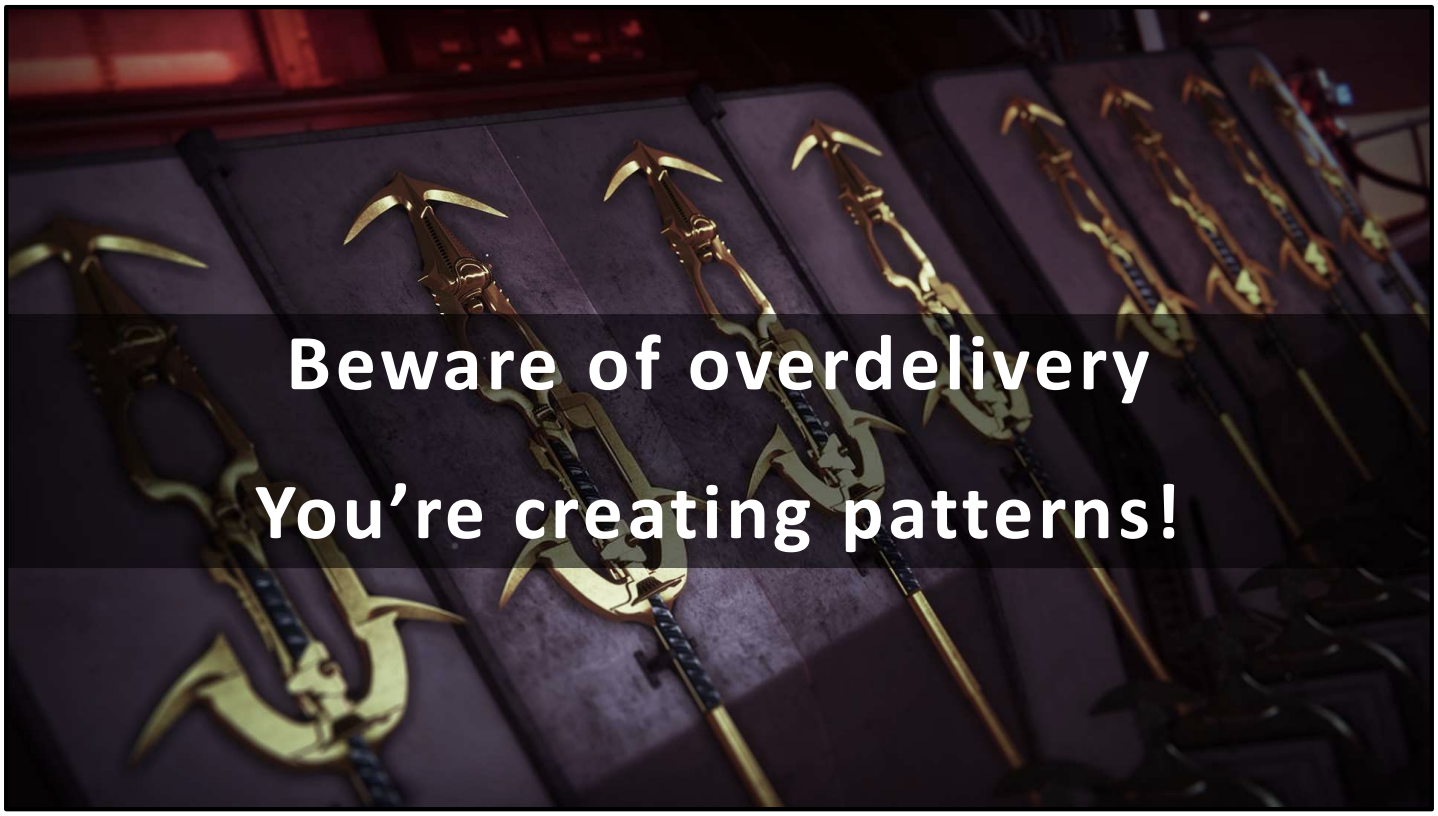
- They both come from a GDC talk given by Destiny 2 General Manager Justin Truman in 2022.
- That talk was called:
- In the minds of many Destiny 2 players - after having had them appear in a legion of critical videos - these images represent the Death of Destiny 2.
- Even back in 2022 - fans were outraged at the suggestion that suggested that Bungie weren’t willing to give 100% to every update, that they were holding things back based on the quote below from the talk:
“It’s HARD to tell a team that has extra cycles and energy and want to do something amazing — that would be amazing and awesome for the game — we should not ship this, because it is an over-delivery that will set us up for failure on future trains.”
- The implication is clear - Destiny’s developers could do more for players.
- They don’t even want to give you what they have previously.
- To an audience in 2023 especially, this is a clear sign of the crimes of Bungie - failing to deliver, and monetizing more while they do so.
- Especially while they’re not delivering across the board on story, pvp or wider gameplay changes.
- Except all of that ignores the context of the slides.
- Because this talk is actually about how Bungie messed up the launch of Destiny 2 so badly that they had to rebuild their studio, their approach to games and most importantly - their approach to players.
Context Is Queen
- This talk was given one month after Bungie released an expansion that many still consider to be the best ever - The Witch Queen.
- Best reception - strongest business year in Destiny history in 2022.

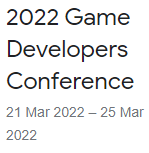
- From the perspective of Bungie?
- They solved live services so hard that a major console manufacturer wanted them on board on the strength of that alone.
- Which is important when we think about the talk itself.
- This was at GDC.
- It is ostensibly a public event, but the vast majority of the public won’t be there.
- If you’re there, it’s to share information about game development or learn from the people doing that.
- If you’re making a Live Service game in 2022 - you want to listen to Bungie talk about how they had to adapt.
- They talk through the creation of Destiny 2
- They were obliged by their publisher (Activision) to release a sequel three years after D1
- Aim was to take Destiny out of it’s niche - but keep the things people loved
- It worked, Metascore 10 points higher than D1!
- Then Bungie started scrambling after six weeks when things started going wrong.
- Hardcore players ran out of content and started complaining.
- Then everyone else did.
- Destiny became known as a game people complained about - User Numbers sank

And this moment, right here in February of 2018, was f***ing terrifying.
- Bungie had One Month Before WAU dropped to Zero
- The journey from this moment to Witch Queen is the structure of the talk.
- Which started with changing their workflow:
- Halo was a "Box Product" Success for Bungie
Critical Acclaim, Broad Popular Appeal, Cultural Relevance, High Sales, Sustained Player Engagement.
Destiny wasn't a critical success - but it had massive engagement, it couldn't be a "Box Product" success.
You can fix your reviews, fix your sentiment, and fix your sales, as long as you have engagement. As long as you have a community of players who care about and are passionate about your game.
- This is where the quote on apathy comes from
The opposite of Loving a game, the thing that will kill your game, is Apathy.
- With the fundamental framing being this:
- Halo launched after years and years of internal iteration - to complete success.
- It was a boxed product success - that was then followed by more content afterwards.
- Destiny had to be rethought of as how to get a “live service success.”
- Which was Speed and Community engagement - which gives rise to the Train Analogy.
… to stay afloat as a Service TODAY you need to be constantly feeding your players, responding to their concerns, making the game better. If Box Products are in the business of OVER-DELIVERY, Live Service is the business of CONSTANT DELIVERY
Velocity is more important than position.
- This seems counter intuitive - why not just release a good game straight away?
- You can just over-deliver and make Halo again. Do That!
- Someone did that and it didn’t work twice in a row.
- The problem is that you’re already competing with Halo and every other live service out there which have established audiences.
- Look what happened when Halo stopped overdelivering with Infinite
- Which means Live Service success is finding a specific audience that sees the potential - then build from there.
- Where success is how fast you can get to that potential.
- This was also why Bungie wanted to be comfortable with failing in public - iterating in front of players now.
- Which has helped Bungie get a rep as an open developer - who show players everything.
- (This will be relevant later)
Revenue as the Final Step of the Plan
- But ultimately - this brings us to the first of the bad slides.

- Looking at this out of context - it’s hard not to think of that one Scarface quote.
- Destiny’s plan for Domination - getting all of the players under their thumb and then Squeezing to get the money out of them.
- But in reality - this was a crisis plan.
- Formed in direct response to the disaster on launch - and the potential for the game to have no players by week 30 of it’s existence.
- So they took each step in sequence:
- Trust took a year to build
- Getting Streamers and Hardcore players back on board
- Bumping vocal pain points up the fix queue - even if the team thought they aren’t root causes of the problem
- Cutting MTX and taking revenue losses to build audience faith
- Hello World of Warcraft
- Retention could follow once people were willing to try the game again
- This was where Forsaken stepped up as the start of the second year of D2
- Fixing endgame and making sure hardcore players had things to engage with
- then Bungie took a look at Revenue again in line with things players were asking for.
- Removing Lootboxes
- Moving to direct purchases
- adding F2P as an entrypoint
- Trust took a year to build
- The long term success of all of these are now slightly up in the air (though presumably financially successful based on where they were by the time of Witch Queen)
- But at the time?
- This was the key marker for Bungie being successful - that they had recovered on all three aspects.
Train Stations Not Trains
- The Live Service model also is part of the way that they wanted to Redefine Success in the wake of the launch of the game.
You’re building a train station, not a train
- The Seasonal Model means that there are, at any time, half a dozen seasons of Destiny 2 in development - by a similar size team as delivered Destiny 2 on Launch.

Success for a great Train Station means predictability. It means scheduling rigor. It means no one has to do any heroics.
- If every season is broadly the same in terms of quality and content, that’s great for everyone!
- It means staff aren’t crunching (and we know Bungie faced allegations of nearly a decade of this)
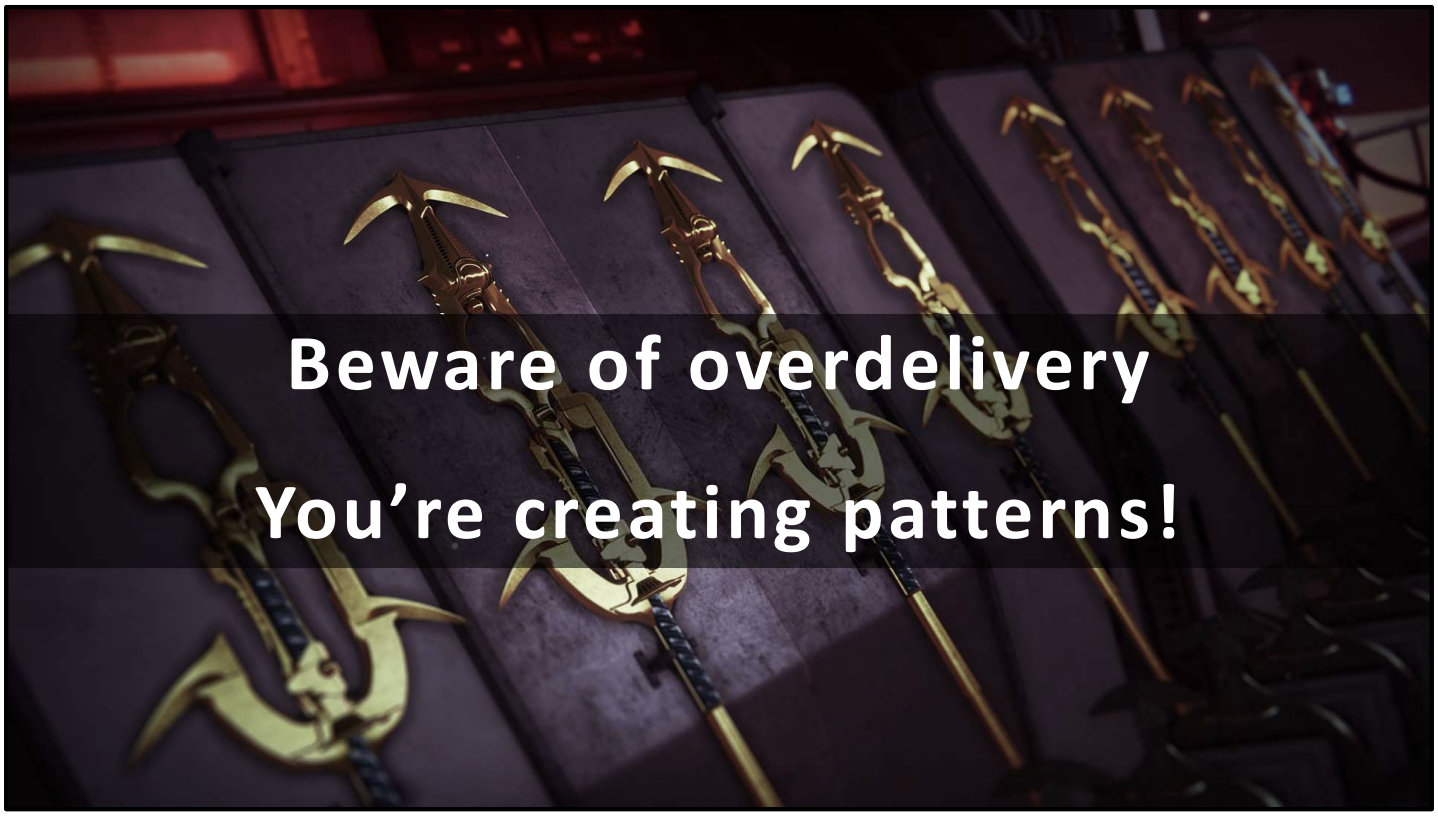
- But that brings us to the other hated slide, the one with the quote from earlier in it’s now full context:
But at the same time – and this is why this lesson is painful, so much of quality and delight in our craft comes from over-delivery, right?
From giving folks stuff above and beyond what they expected! We still want that – we still want to surprise and delight and sometimes overwhelm our players. But we need to be mindful of the patterns, and the implied future commitments we’ve set for ourselves each time. This is TOUGH – and this is the one honestly we’re still grappling the hardest with. It is HARD to tell a team, that has extra cycles and energy and want to do something amazing – that totally would be amazing and awesome for the game – to tell them “We should not ship this, because it is an over-delivery that will set us up for failure on future trains.”
- And the context is important here again.
- There’s a general understanding of this slide suggesting that Bungie had made a cardinal mistake here.
- Saying 'don't' over-deliver' while they were under-delivering.
- But again, this is just as Season 16 has launched - the Witch Queen has just released.
- This is Destiny 2 at it’s most Successful
- In 2023 - that’s a lot less favourable in interpretation.
- What’s usually left out of these conversations too is the next slide which discusses the actual takeaway of the “Don’t over-deliver” statement.
We need to understand how it will be repeated, and whether we can do that repeating sustainably. And if we CAN’T repeat the blueprint – or we don’t want to, we need to make sure player expectations are setup to match ours!
- Less about delivering less to people in the totality of time
- More about delivering sustainably and managing expectations
- And this is where Bungie have then run into issues almost always - even recently.
- Where they simply haven’t been able to manage player expectations.
- Which is what gives rise to all of the frustration and anger that’s been particularly present this year.
The Bungie Paradox
- They spend a lot of time talking to players about aspects of the development process, so players think all developer communication is for them
- This talk was not necessarily for players - it’s explicitly at GDC for the purpose of having other developers avoid their mistakes
- But because that relationship is built up with their audience, this is no different to the audience than any other time Bungie has shown them something - this presentation becomes a moratorium on the state of the game, passed on further by influencers and critics.
- That’s not a bad thing necessarily - education and information is why we make videos.
- But it’s especially an issue here because the vast majority of people aren’t going to go look at these slides and understand the context
- Which means in the year 2023, these slides can be presented as a Gotcha - that Bungie are celebrating under-delivery and being more revenue driven than a regular company.
- The problem is that two things are being conflated -
- Bungie talking currently about ongoing development of the game in dev talks
- This GDC talk which is specifically talking about how they salvaged Destiny 2 from year one and lessons other devs can learn, and doing so on the high of their best release. The culmination of all lessons in the talk.
- They aren’t the same!
- But players burned by Destiny’s developer talks never delivering what the players hope for have frustration building - which gets “proven” by this talk.
- Which makes it an easy scapegoat for broader anger at their wants not being met.
- The talk can’t be “un-given” - it’s out there.
- And regardless of us spending time explaining that - it’s still going to be framed as Bungie’s failure.
- Which means it’s up to Bungie themselves to now change things - the only solutions are
- Player Expectations matching Developer Output
- Players leaving the game because those two things can’t be reconciled
- In short - this entire saga started with Bungie rapidly reassessing their development strategy in order to mange player expectations around content and releases.
- That said, mistakes are clear
- Monetization.
- Complete narrative misfire.
- Since then?
- Industry is more competitive.
- Loot shooter is no longer a new category, some players are tired of it.
- As any mmo-like shows, getting continual minor revamps of the formula right is hard.


